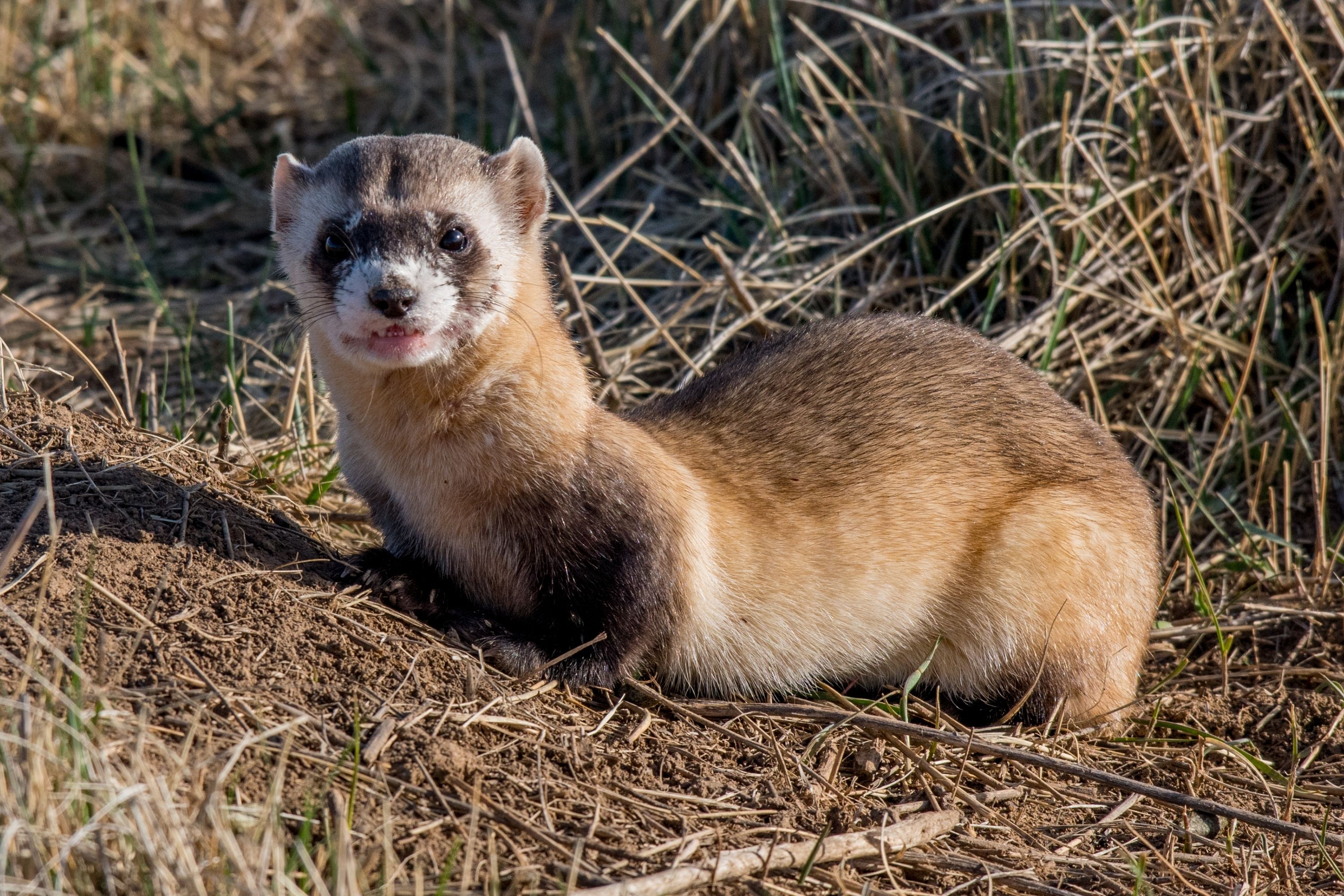Black-footed ferret
(Mustela nigripes)

Description
The black-footed ferret (Mustela nigripes), also known as the American polecat or prairie dog hunter, is a species of mustelid native to central North America. The black-footed ferret is roughly the size of a mink and is similar in appearance to the European polecat and the Asian steppe polecat. It is largely nocturnal and solitary, except when breeding or raising litters. Up to 90% of its diet is composed of prairie dogs. The species declined throughout the 20th century, primarily as a result of decreases in prairie dog populations and sylvatic plague. It was declared extinct in 1979, but a residual wild population was discovered in Meeteetse, Wyoming in 1981. A captive-breeding program launched by the United States Fish and Wildlife Service resulted in its reintroduction into eight western US states, Canada, and Mexico from 1991 to 2009. As of 2011, over 1,000 mature, wild-born individuals are in the wild across 18 populations, with four self-sustaining populations in South Dakota (two), Arizona, and Wyoming. It was first listed as "endangered" in 1982, then listed as "extinct in the wild" in 1996 before being upgraded back to "endangered" in the IUCN Red List in 2008. In February 2021, the first successful clone of a black-footed ferret, a female named Elizabeth Ann, was introduced to the public. The black-footed ferret has a long, slender body with black outlines on its paws, ears, parts of its face and its tail. The forehead is arched and broad, and the muzzle is short. It has few whiskers, and its ears are triangular, short, erect and broad at the base. The neck is long and the legs short and stout. The toes are armed with sharp, very slightly arched claws. The feet on both surfaces are covered in hair, even to the soles, thus concealing the claws. It combines several physical features common in both members of the subgenus Gale (least and short-tailed weasels) and Putorius (European and steppe polecats). Its skull resembles that of polecats in its size, massiveness and the development of its ridges and depressions, though it is distinguished by the extreme degree of constriction behind the orbits where the width of the cranium is much less than that of the muzzle. Although similar in size to polecats, its attenuate body, long neck, very short legs, slim tail, large orbicular ears and close-set pelage is much closer in conformation to weasels and stoats.
Taxonomic tree:







